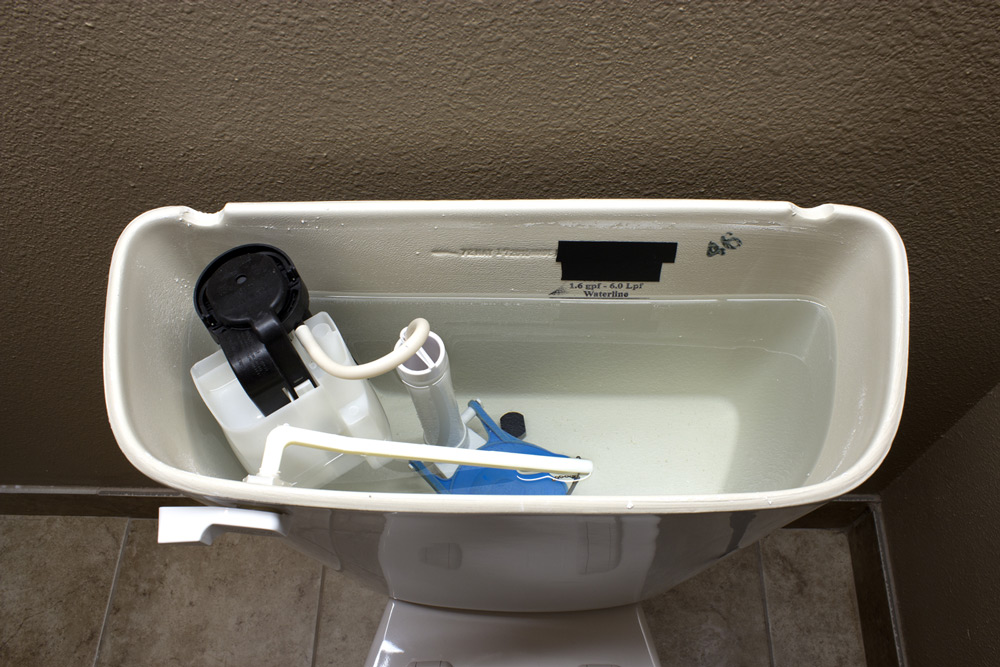Toilet repairs probably aren’t on your list of favorite things to do. After all, the toilet isn’t the prettiest component of your bathroom, but it’s certainly something you can’t do without.
That’s why it’s good to know both an emergency plumber as well as some simple toilet repairs you can master. With a little bit of help, you can address common problems such as unclogging a toilet, repairing a running toilet, fixing a flush handle and adjusting a toilet seat.
But before you attempt any repairs, let’s get you ready with some information.
The Basics of How a Toilet Works
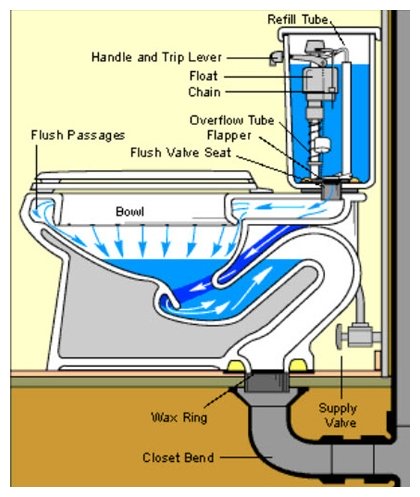 The best way to understand how your toilet works is by seeing it in action. If you can, remove the lid from the tank and flush the toilet to watch it operate. Here’s what you’ll see when you press the toilet handle:
The best way to understand how your toilet works is by seeing it in action. If you can, remove the lid from the tank and flush the toilet to watch it operate. Here’s what you’ll see when you press the toilet handle:
- The chain attached to the flush handle lifts the flapper that covers the toilet flush valve.
- Water flows into the toilet bowl.
- The water from the tank forces wastewater in the toilet bowl into the main drain.
- Once the tank is empty, the flapper valve closes and water refills the tank as this illustration from Hometips.com shows.
Simple, right? What could possibly go wrong? Well, several things. But that’s why we’re here to help.
Some Guidelines for DIY Toilet Repairs
A few tips as you get started:
- Know how to turn off the water supply to the toilet. A hose attached to the base of the toilet will lead to an adjacent wall. Turn the knob on the wall clockwise to turn off the water supply.
- Carefully remove the tank lid, which might be heavier than you expect. They do break if dropped.
- Don’t overtighten nuts, bolts or other connectors, whether they are metal or plastic. You can crack the toilet or damage the connectors.
- Make sure you have the correct repair parts for your toilet. It’s often easiest to take a broken part to the store when purchasing a replacement.
Now on to some simple toilet repairs that fall short of a plumber emergency.
How to Fix a Clogged Toilet
A clogged toilet can be very gross, but in most cases, it’s not a very big problem. For the vast majority of toilet clogs, you only need one tool: a plunger. In most cases, this can be an easy toilet repair because there’s nothing to replace.
If the toilet is completely clogged, the water level in the bowl will fill to near the brim after a flush. Do not attempt to flush again, because the water will back up and overflow from the toilet, creating a bigger – and definitely messier — problem.
If the toilet is partially clogged, the water level will rise high after a flush and then drain slowly. You’ll want to keep enough water in the toilet bowl so that the plunger head is covered as you are plunging.
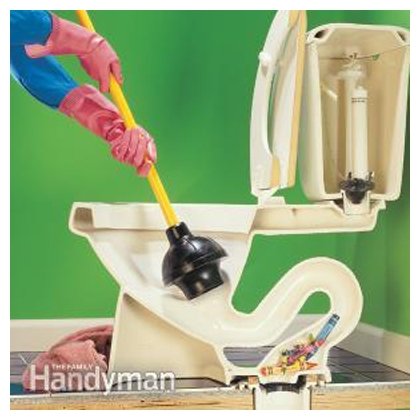 Plunging tips:
Plunging tips:
- Start gently, especially if the water level is high. If the clog is a partial one, allow the water in the toilet bowl to drain a few inches below the brim of the bowl before plunging.
- Push the head of the plunger in and out vigorously (that’s the motion referred to as plunging).
- Be patient. The plunging might not work immediately.
When the clog is released, the water will drain and make the familiar flushing sound. Success!
Wait a minute and then flush the toilet to make sure the clog is completely cleared. If you have frequent toilet clogs, contact a licensed plumber.
Common Remedies for a Constantly Running Toilet
A running toilet is annoying, and it also wastes a lot of water – as much as 200 gallons each day, or 6,000 gallons per month. Prices vary, but a good North Texas estimate would be that a leaky toilet will add about $60 per month or $720 per year to your water bill. This is an easy DIY toilet repair project to save that kind of money.
There are several causes of that constant running, which is typically indicated by a hissing sound from the toilet or the tank refilling without a flush. It might be that water is leaking through a defective toilet flapper or flush valve, or it could be that water is leaking into the overflow tube.
Here are several potential easy fixes:
- Jiggle the toilet handle. This can sometimes give a slight tug to the flapper to pull it into correct placement so that water in the tank doesn’t leak into the toilet bowl.
- Check the chain. The lift chain that connects the flush handle to the flapper can sometimes get kinked or stuck on something, preventing the toilet flapper from closing. Adjust the chain if necessary to make sure there is enough slack for the flapper to close properly.
- Check the flapper. A toilet flapper might not seal properly if it is dirty, has mineral buildup on it or is worn. Remove the flapper by unhooking it from the bottom of the overflow tube in the tank. Soaking a flapper in vinegar can help clean it, but if it is worn, it’s inexpensive to replace. Take the flapper to the store to find a suitable replacement and hook the new toilet flapper on to the overflow tube.
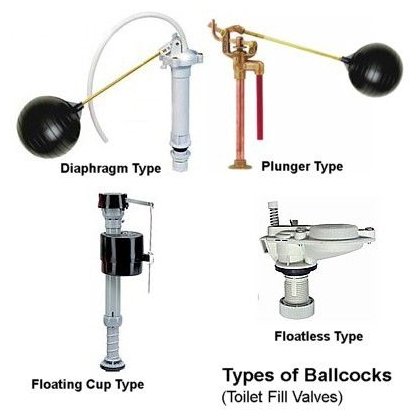 Adjust the toilet float mechanism. When water refills in the tank after a flush, if it doesn’t stop before reaching the top of the overflow tube, it will constantly spill down the tube and into the toilet bowl. That will make the toilet run constantly. This video shows how to adjust the water level in the tank if you have a floating cup fill valve.
Adjust the toilet float mechanism. When water refills in the tank after a flush, if it doesn’t stop before reaching the top of the overflow tube, it will constantly spill down the tube and into the toilet bowl. That will make the toilet run constantly. This video shows how to adjust the water level in the tank if you have a floating cup fill valve.
If you have a toilet float ball flushing mechanism that does not have an adjustment screw, bend the float arm down slightly so the ball reaches the shutoff point at a lower level. If your toilet has a float cup, which is a small circular cylinder that surrounds the fill valve, slide the float cup down on the fill valve to lower the shutoff point. (Illustration: thespruce.com)
How to Fix a Loose Toilet Flush Handle
A toilet flush handle that jiggles loosely or moves up and down with no effect on the toilet can be easily fixed.
If the flush handle moves up and down with no resistance, it’s likely that the chain that connects the handle and the flapper has become detached. Open the lid of the toilet tank and reattach the chain.
If the chain is attached and the toilet handle is too loose, you’ll want to adjust the handle’s mounting nut inside the tank. This can be done with your fingers or a wrench. One thing to remember is that the mounting nut has reverse threads, meaning it will be tightened with a counter-clockwise rotation.
How to Fix a Loose Toilet Seat
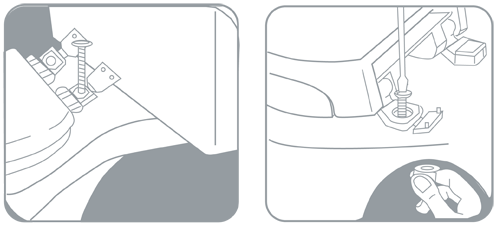 Adjusting a toilet seat is another easy toilet repair, but there are reasons to be careful. The back of the toilet seat is connected to the toilet with two long screws that run through the porcelain behind the toilet bowl and are secured by nuts underneath. The videos on this page show how to install and adjust the most common toilet seat installations. (Illustration:Beamis.com)
Adjusting a toilet seat is another easy toilet repair, but there are reasons to be careful. The back of the toilet seat is connected to the toilet with two long screws that run through the porcelain behind the toilet bowl and are secured by nuts underneath. The videos on this page show how to install and adjust the most common toilet seat installations. (Illustration:Beamis.com)
The screws usually have a plastic covering over them that is lifted to reveal the screw heads. Use a small flat-head screwdriver to pry the plastic covering up. After that, follow these steps:
- Center the toilet seat on the bowl.
- Tighten the screws. Unlike with the toilet flush handle, these screws will tighten with the traditional clockwise (“righty tighty, lefty loosey”) movement. Make sure you have the correct size screwdriver so that you don’t damage the top of the screw.
- If the screws don’t tighten fairly easily, you might need to use a pair of pliers or small wrench to grip the bolt underneath so that it doesn’t move as you turn the screwdriver above.
If you decide you want to get a new toilet seat, make sure you get the right one for your toilet.
What About the Next Level of Toilet Repairs?
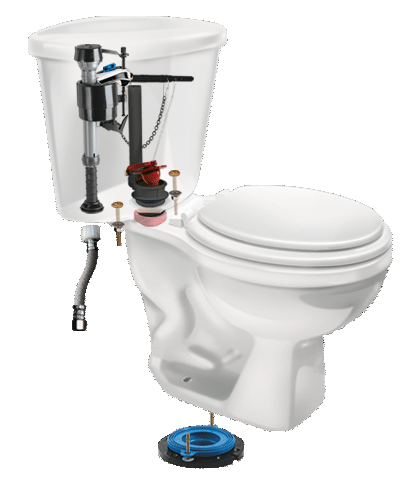 Here are certainly more DIY toilet repairs that you can take on, depending on your level of skill and confidence. Replacing a fill valve or a toilet flush valve is sometimes needed to fix a running toilet and a toilet that leaks at the base might require replacing the wax ring. Stubborn clogs can sometimes be removed with a toilet auger. (Illustration: fluidmaster.com)
Here are certainly more DIY toilet repairs that you can take on, depending on your level of skill and confidence. Replacing a fill valve or a toilet flush valve is sometimes needed to fix a running toilet and a toilet that leaks at the base might require replacing the wax ring. Stubborn clogs can sometimes be removed with a toilet auger. (Illustration: fluidmaster.com)
But those repairs might require some patience, and in some cases, heavy lifting. Sometimes what appears to be a clogged toilet is actually a clogged sewer line, which will require the services of a licensed plumber. To avoid making a problem worse or creating another one, if you have any doubts or concerns, contact a trusted plumber.
CONCLUSION
Toilet problems can be complicated, and in those cases should be left to an expert in plumbing repair. But there are also simple toilet repairs that you can master, including clogged toilets, constantly running toilets, fixing loose flush handles and toilet seats.
Some final reminders:
- After removing the tank lid, set it in a safe place away from you are working
- Make sure you have the right tools (plunger, wrench, screwdriver, etc.)
- If you have a broken part, make sure you buy the correct size and style of replacement
- Don’t take apart any assembly that you might have difficulty putting back together
When in doubt, get the help of a plumbing professional. In Dallas-Fort Worth, TX billyGO provides excellent toilet clog and repair services. If you need help with your toilet or plumbing schedule with us today!

